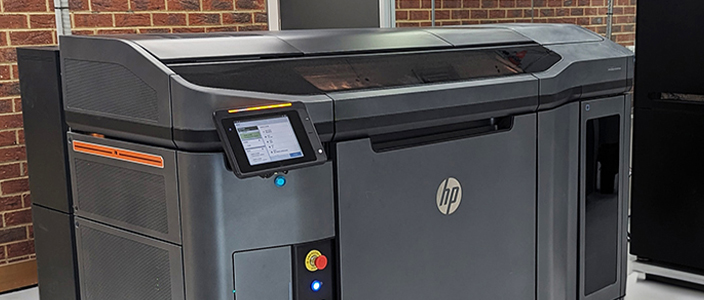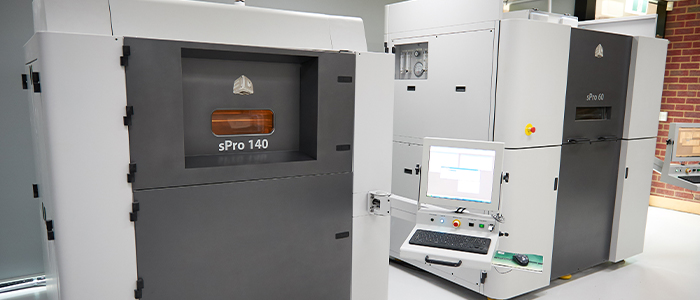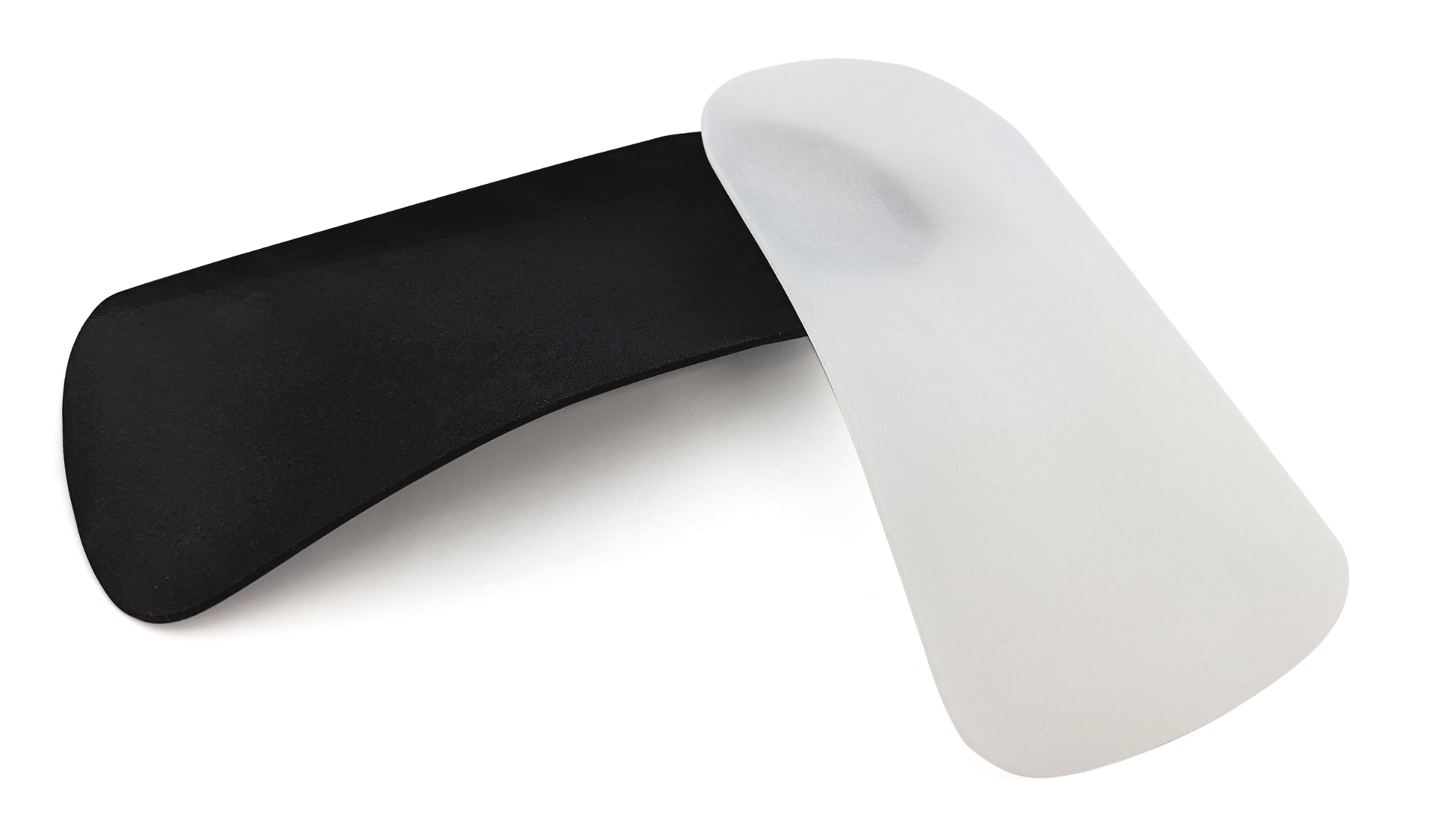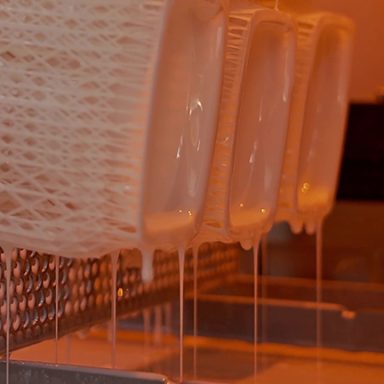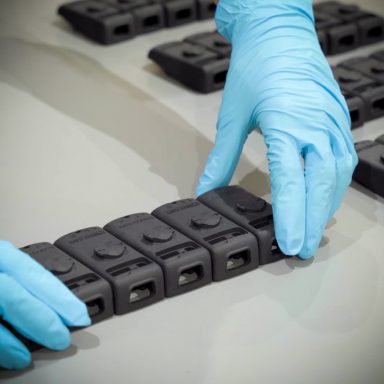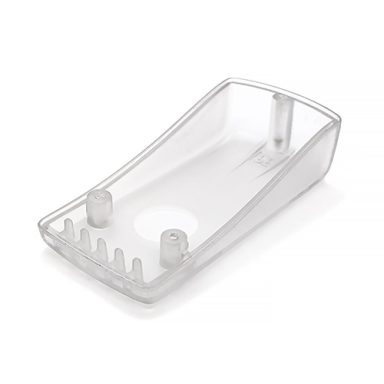What Is The Difference Between MJF and SLS 3D Printing? Which Do You Need?
October 31, 2023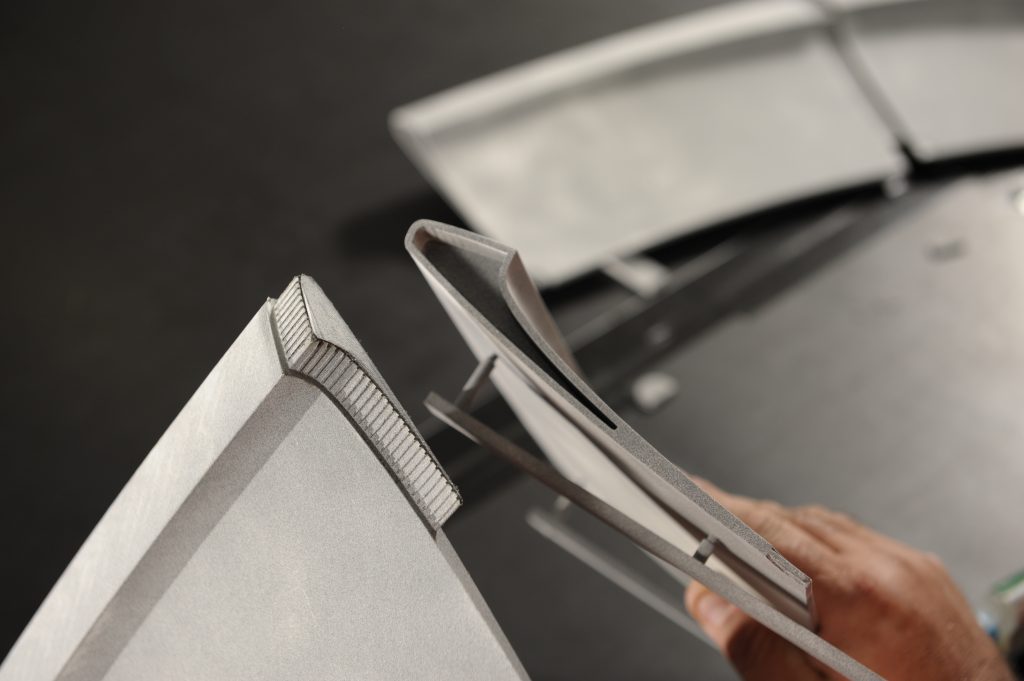
Deciding on which 3D printing method to use for your project, there are several options that you can choose from.
Two of the most popular options are Multi Jet Fusion (MJF) and Selective Laser Sintering (SLS). While both offer high-quality results, there are key differences between the two techniques that make each one better suited for certain applications.
In this blog post, we will delve into the specifics of MJF and SLS printing and help you decide which method is best for your next 3D Printing project.
What Is Multi Jet Fusion Printing?
MJF printing is an industrial 3D Printing process that people often use when they need to create functional prototypes or end-use parts.
This method involves depositing layers of both fusing and detailing agents onto a powder bed using an inkjet array. Afterwards, thermal energy is applied to fuse the materials together, one layer at a time, resulting in a solid object.
After the printing process is complete, the object is moved to a post-processing station where it is cooled. Excess powder is recycled for the next project, and finishing touches are added.
MJF Printing is renowned for its exceptional speed and precision, making it the perfect solution for rapid prototyping and small to medium batch production (also referred to as Additive Manufacturing).
What Is Selective Laser Sintering?
Selective Laser Sintering is a 3D Printing method that uses a high-powered laser to selectively fuse powdered nylon together layer by layer.
The laser scans the surface of the powder bed, melting and fusing the particles together layer by layer until the final object is formed.
Commonly used for functional prototypes and end-use parts, SLS printing is known for its strength, durability and ability to produce highly detailed and geometrically complex finished products. Like MJF, SLS is a good solution for rapid prototyping and small to medium batch production (also referred to as Additive Manufacturing).
MJF vs. SLS: What Are The Key Differences?
While SLS and MJF are both powder-based Polyamide 3D printing processes, they exhibit several distinctive characteristics that can influence your choice of method for your project. To help you make an informed decision, here are some of the key differences between these two printing methods to consider:
1) Print Mechanism
As mentioned previously, MJF employs an inkjet array to deposit fusing and detailing agents onto the powder bed, while SLS relies on a high-powered laser to selectively fuse the powder particles together. This fundamental difference in printing mechanisms leads to variations in the level of detail and precision achievable with these two methods.
Furthermore, this difference in printing mechanisms also affects the operational speed of these contrasting technologies. An important advantage of MJF is that its print times are predictable based on the z-height of the build, regardless of how many parts are included in the build platform. In contrast, SLS build times can fluctuate depending on the complexity of the assembled build, often resulting in build times approximately twice as long as MJF for a full build.
However, it’s worth noting that SLS excels in handling densely packed builds, allowing for the production of a significantly larger number of parts simultaneously compared to MJF. Additionally, SLS is better suited for accommodating thicker parts than MJF. This capability can often translate to an SLS build platform having up to 2.5 times the volume or quantity of parts as compared to MJF, even for a similar-sized platform.
2) Materials
One significant distinction between these two methods lies in their material usage. While both technologies provide solutions for various materials, including Polyamides and other more unconventional options, they differ in their approach. MJF typically operates on a one machine, one material principle, with our Formero MJF printer exclusively using PA12 as its primary build material. In contrast, SLS offers a broader array of materials that can be readily swapped out within a short timeframe, offering a more versatile range of options, as detailed below.
DuraForm® PA Plastic: A durable nylon material that is great for creating prototypes that are used for real-world physical testing and functional use.
DuraForm® EX Plastic: A rigid nylon blend that is great for creating durable and functional objects.
DuraForm® GF Plastic: A glass-filled engineering plastic that is great for creating durable prototypes that require a high level of stiffness and heat resistance.
DuraForm® HST Composite: A fibre-reinforced engineering plastic that is also high in stiffness and temperature resistance.
DuraForm® PAx Natural: This is a material that has a high elongation, high recyclability, and high impact. Making it great for the manufacturing of tough but lightweight parts.
PA 2210 FR: This white polyamide 12 powder is created with a halogen-free chemical flame retardant which makes it great for applications where there is an increased need for fire protection, such as the aerospace and automotive sectors.
This means that if you require a specific material for your project, SLS may offer more options.
3) Cost
Both SLS and MJF stand out as excellent choices for creating functional prototypes or producing end-use parts, and when it comes to cost, both options are generally quite affordable. However, determining which of these technologies is the more cost-effective choice can be a complex task, as numerous factors contribute to the overall cost for the end customer. These factors include:
- Initial purchase price of printer and accompanying equipment
- Cost associated with maintaining the equipment
- Expenses relating to consumables
- The usable lifespan of the equipment
- Material purchase price
- Material recyclability
- Print speed
- Packing density
- Post-processing requirements
- Power usage
- Labour content
This list of considerations goes on, making it challenging to easily distinguish cost differences between SLS and MJF. However, at Formero, we often find that as production quantities increase, SLS tends to become the more cost-effective solution. It’s worth noting that when dealing with a set of parts ideally suited for both MJF and SLS, with a build material of PA12, MJF typically emerges as the more affordable option.
4) Part Size
Another significant distinction between these two methods pertains to the maximum part size they can produce as a single, continuous piece. At Formero, utilising the print systems in our possession, MJF offers a maximum build volume of 380x284x380 mm. In contrast, SLS printing is capable of accommodating larger parts, with dimensions of up to 550x550x460 mm.
5) Accuracy
Regarding accuracy, it’s worth noting that both methods have the capability to produce highly detailed and precise parts. However, SLS tends to excel in terms of accuracy and repeatability, especially when it comes to crafting intricate designs and complex geometries and especially as the parts get larger.
6) Part Durability
When comparing both printing methods, they exhibit significant similarities, particularly when dealing with PA 12 material. However, MJF holds a notable advantage in terms of part strength across different axes. MJF-produced parts are regarded as isotropic, which means they possess similar strength characteristics in all three axes (X, Y, and Z). In contrast, SLS parts tend to exhibit noticeably lower strength in the Z axis compared to the other axes.
However, SLS printing offers the option for stronger and more durable materials such as DuraForm® EX Plastic and DuraForm® HST Composite and other more exotic materials.
7) Colours
When it comes to colours, there’s a noticeable difference between the two methods. MJF-printed parts usually have a fine granular look with a greyish tone. The usual practice involves dyeing these grey parts black, which enhances their appearance and makes them more consistent.
On the other hand, SLS printed parts are initially white, except for DuraForm® EX, which can be either white or black. The white colour of SLS parts gives them the flexibility to be dyed in various colours, allowing for plenty of customisation options based on your project’s specific requirements.
Which Do You Need? Best Case Scenarios for Each Type
After taking into account the significant differences between MJF and SLS printing, the choice ultimately boils down to your specific needs and project requirements. Here are some considerations to help you decide:
- Multi Jet Fusion (MJF):
- Fast and Cost-effective: Ideal for rapid production of functional prototypes or small-batch productions.
- Good Surface Finish: Provides a good surface finish on printed parts.
- Reasonable Mechanical Properties: Offers reasonable mechanical properties for most applications.
- Isotropic Strength: Particularly advantageous when consistent strength across all three axes is crucial.
- Material Availability: Suitable if the available materials align with your project’s requirements.
- Selective Laser Sintering (SLS):
- Highly Detailed and Durable: Best suited for producing highly detailed and durable parts, especially those with complex geometries.
- Material Variety: Offers a broader range of materials, making it a suitable choice for projects requiring specific materials not available in MJF.
- Larger Part Sizes: Can accommodate larger part sizes, which is essential for certain applications.
- Larger batch volumes: Can accommodate much larger batch sizes.
In the end, both printing methods yield high-quality results and can cater to various project needs. To make the best choice, carefully assess your project requirements, considering factors like speed, cost, surface finish, mechanical properties, part size, and material availability. Here are some best-case scenarios for each printing type:
- Best-case scenarios for MJF: Rapid production of functional prototypes or small-batch productions where surface finish and isotropic strength are critical.
- Best-case scenarios for SLS: Projects demanding highly detailed, durable parts with complex geometries, larger part sizes, larger batch sizes or specific materials not available in MJF.
MJF Applications
- Automotive: MJF is great for creating prototypes and end-use parts for automotive applications due to its ability to produce highly accurate and functional parts.
- Robotics and UAV Drones: MJF is ideal for creating lightweight and durable parts for robotics and UAV drones, thanks to its high strength-to-weight ratio.
- Aerospace: MJF’s precision and detail make it a suitable choice for creating parts for aerospace applications.
- Medical devices: With its ability to produce precise and detailed parts, MJF is a popular choice in the medical industry for creating prototypes and end-use parts with complex geometries.
- Consumer goods: MJF is an excellent option for small-batch production of consumer goods due to its fast print speed and good surface finish. It can be used to print a variety of products, such as phone cases, home appliances, and more.
- Battery Housings: MJF can also be used for creating battery housings for electronics, thanks to its high strength and durability.
- Electronic Connectors: Multi Jet Fusion can produce high-quality, intricate details, making it a suitable choice for creating electronic connectors.
- Snap-fit designs: Due to its high accuracy and precision, MJF is ideal for creating snap-fit designs that require tight tolerances.
- Parts requiring machining or joining with adhesives: MJF’s smooth surface finish makes it a good choice for parts that require machining or joining with adhesives.
- Appropriate for low- to mid-volume additive manufacturing: Multi Jet Fusion is perfect for low- to mid-volume additive manufacturing, making it an ideal choice for small businesses and start-ups or One time orders.
SLS Applications
-
- Aerospace: With its ability to produce strong and durable parts, As well as the option for heat-resistant material, SLS printing is a popular choice for aerospace applications that require high-quality and reliable products.
- Automotive: SLS can create detailed and precise parts, making it suitable for producing automotive components and spare parts.
- Medical Devices: Similar to MJF, SLS can also be used in the medical industry for creating prototypes and end-use parts with complex geometries.
- Prosthetics & orthotics: SLS printing is a great option for creating prosthetics and orthotic devices due to its ability to produce customised, durable, and lightweight parts.
- Housing and enclosures: Thanks to its high strength and durability, SLS is suitable for producing housing and enclosures for electronics and other products.
- Impellers and connectors: With its ability to produce intricate designs, SLS is commonly used for producing impellers and connectors in various industries.
- Flame retardant applications: SLS offers a variety of materials suitable for flame retardant applications, making it a popular choice in industries such as aerospace and transportation.
- Snap-fit designs: Similar to MJF, SLS is also well-suited for creating snap-fit designs.
- Consumer goods: SLS can produce high-quality, detailed parts, making it a suitable choice for small-batch production of consumer goods with complex designs.
- Parts requiring machining or joining with adhesives: The smooth surface finish of SLS makes it a suitable option for parts that require machining or joining with adhesives.
- Appropriate for mid-volume additive manufacturing: SLS is great for mid-volume additive manufacturing, making it a suitable choice for businesses looking to produce larger quantities of products.
How Formero Can Help You
At Formero, we are equipped with state-of-the-art Multi Jet Fusion and Selective Laser Sintering printing technologies to help you bring your ideas to life.
Our expertise spans various industries with a wide range of 3D Printing and Traditional Manufacturing services available. We have extensive experience working with clients from diverse industries, such as automotive, aerospace, medical, consumer goods, and more.
If you need help selecting the best printing method or material for your project, our team of experts can assist you in making the best choice. We offer a wide range of materials to choose from – ensuring that we can provide the most suitable option for your specific requirements.
Conclusion
While both Multi Jet Fusion and Selective Laser Sintering printing offer high-quality results, the best option for you will ultimately depend on your specific needs and project requirements. Consider factors such as material availability, part complexity, print speed, and surface finish to determine which method is most suitable for your project.
At Formero, we are dedicated to helping our clients achieve their goals by providing them with top-of-the-line 3D Printing services. Contact us today to see how we can help bring your vision to life!

